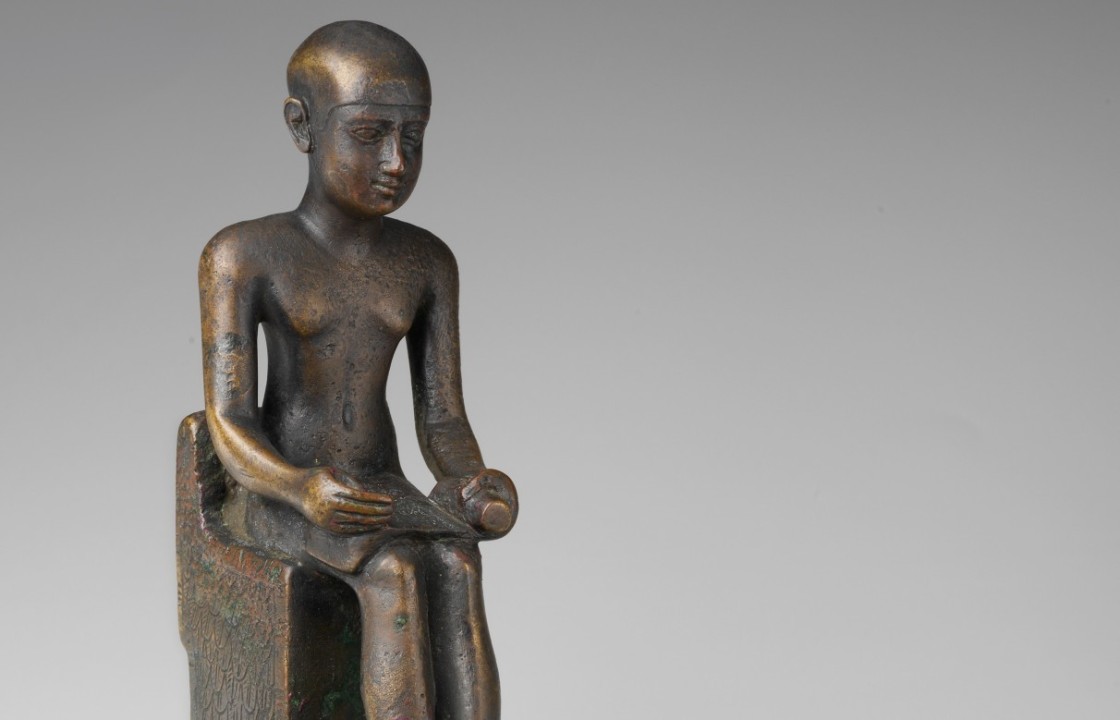
Imhotep: Chief Lector Priest to Pharaoh Djoser?
Following up on Pharaoh Menes (Narmer): The Unification of Upper & Lower Egypt, this week we’ll take a look at Imhotep who is credited with designing the first step pyramid in Egypt.
---
Very little is known of Imhotep as a historical figure, but in the years following his death, he was gradually deified.
Several sources identify Imhotep as an adviser to King Djoser credited with the design of the Step Pyramid in Saqqara (Pyramid of Djoser), the earliest pyramid in Egypt built during the 3rd Dynasty (2670-2613 B.C). Imhotep is mentioned by name and title in connection with Pharaoh Djoser and his successor Sekhemkhet, both of the 3rd dynasty in the Old Kingdom. These titles call Imhotep the royal seal bearer and great of seers (priest of the temple of Heliopolis), as well as overseer of sculptors. There is no explicit mention of his role as architect of Djoser’s pyramid complex.
Tombs of early Egyptian kings were bench-shaped mounds called mastabas. Around 2780 B.C, Imhotep is credited with building the first pyramid by placing six mastabas, each smaller than the one beneath, in a stack to form a pyramid rising in steps.
The Step Pyramid stands at a height of 204 feet with six stepped layers, the largest building of its time. Limestone was first used on a large scale as a construction material and the idea of a monumental royal tomb in the form of a pyramid was first truly realized. Following the Step Pyramid, successor pharaohs began to build pyramids as their tombs.
A tomb painting of a colossal statue being moved shows how huge stone blocks were moved on sledges over ground first made slippery by liquid. The blocks were then brought up ramps to their positions in the pyramid. Finally, the outer layer of casing stones was finished from the top down and the ramps dismantled as the work was completed.
The Famine Stela, is set in the time of Djoser and Imhotep though composed in the Ptolemaic period (305-30 B.C). It’s an inscription written in Egyptian hieroglyphs, and contains 32 columns, which tells of a seven-year period of drought and famine during the reign of Pharaoh Djoser. The top part of the stela depicts three Egyptian deities: Khnum, Satis and Anuket.
The stela presents Pharaoh Djoser as a ruler worried about his starving country because of faulty Nile inundations over seven years. To solve the problem, Djoser consults Imhotep, who is described as a lector priest, son of the god Ptah, and “a member of the staff of the ibis”– connecting him with the cult of Thoth.
The text describes how the Pharaoh Djoser is upset and worried as the land has been in the grip of a drought and famine for seven years, during which time the Nile has not flooded the farmlands.
The text also describes how the Egyptians are suffering as a result of the drought and that they are desperate and breaking the laws of the land.
Imhotep decides to investigate the archives of the temple ḥwt-Ibety (“House of the nets”), located at Hermopolis and dedicated to the god Thoth. He informs Pharoah Djoser that the flooding of the Nile is controlled by the god Khnum at Elephantine from a sacred spring located on the island, where the god resides. Imhotep travels immediately to the location. In the temple of Khnum, called “Joy of Life”, Imhotep purifies himself, prays to Khnum for help and offers “all good things” to him. Suddenly he falls asleep, where in his dream, he is greeted by Khnum. The god introduces himself to Imhotep by describing who and what he is and then describes his own divine powers. At the end of the dream Khnum promises to make the Nile flow again. Imhotep wakes up and writes down everything that took place in his dream. He then returns to Pharoah Djoser to tell the king what has happened.
Djoser is pleased with the news and issues a decree in which he orders priests, scribes and workers to restore Khnum's temple and to once more make regular offerings to the god.
By the New Kingdom (1550–1077 B.C), Imhotep was listed among the wise men of the past, also noted as the most ancient of them. In other sources, Imhotep is mentioned with sages such as Hordedef, Khakheperraseneb and Ptahhotep.
Imhotep’s tomb has yet to be identified. It could be somewhere in Djoser’s burial complex because he was member of the royal family… or it may be somewhere in North Saqqara, where most well-known tombs of the period are located.
An inscription on the enclosure wall surrounding Sekhemkhet's unfinished step pyramid suggests that Imhotep outlived Pharaoh Djoser by a few years.
The transition from the Step Pyramid to a true, smooth-sided pyramid took place during the reign of King Snefru, founder of the Fourth Dynasty (2680–2560 B.C).
---
Hope you enjoyed this week’s Notable People in History newsletter. Subscribe to Notable People in History on your favorite podcasting platform.
Come along with me and explore the lives of Archimedes, Galileo Galilei, Albert Einstein, Wangari Maathai, Ctesibius, Valentina Tereshkova, Chiune Sugihara, Elon Musk, Jeff Bezos, Bill Gates, Warren Buffett… and others who’ve greatly influenced society.
What life choices led them to be so extraordinary… what can we learn from them?
About the Author: Lawrence Jean-Louis is the founder of eBrand Me, a digital marketing agency offering marketing & consultative services to CPAs and tax professionals. She aspires to start a money management firm by 2030.